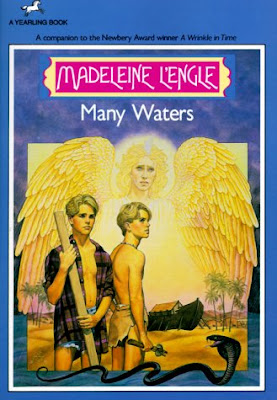It’s been
right around a year since Moana came
out, and I’m feeling nostalgic. Even
though, lately, I’ve been all about the Falsettos,
there’s room for numerous musicals in my heart, and I thought it’d be nice to go through all the songs from Lin-Manuel
Miranda scores, like I did with Hamilton
a while back. I’ll start with Moana, since it’s the newest, then
circle back to In the Heights, Bring It On (both of which I’ve already
done a Top Five Songs for, but that’s okay,) and 21 Chump Street. Today we’re
looking at the first four numbers of the soundtrack.
“Tulou Tagaloa” – Miranda didn’t write
all the songs in the film; this is the first by Opetaia Foa’i. The short track is our induction into the
movie’s world, beginning over the Disney logo with a soloist and building to a
call and response.
Best
lyric: “Sei e va’ai maia / Manala a le
tatou olaga.” (“Look down / At how
beautiful our lives are.”
“An Innocent Warrior” – Another short number
by Foa’i, just gorgeous and otherworldly.
It beautifully captures the spirit of what’s happening, blending the
simplicity of Moana’s act (protecting a baby sea turtle from the gulls) with
the enormity of the implications (the sea choosing her for its mission.) Reading the translation of the Tokelauan
lyrics makes it even better – gentle and lovely.
Best
lyric: “Ou mata e matagi / Ou loto
mamaina toa / Manatu atu / Taku pelepele” (“Your eyes so full of wonder, / Your
heart, an innocent warrior, / My dearest one, / There’s a task for you.”)
“Where You Are” – I can’t believe I
didn’t recognize Christopher Jackson’s vocals as the singing voice of Moana’s
dad in the theater; it jumped out at me the first time I listened to the
soundtrack. Jackson does a great job
with this upbeat number, the first in-story song in the film. This story really captures how the unchanging
traditions of the island are both beautiful and stifling. There’s an exquisite harmony woven over the
island, but at the same time, Moana is slightly trapped within its sameness –
though it’s such a simple lyric, the melody in her dad’s line, “That’s right,
we stay,” perfectly expresses both sides of that coin.
Best
lyric: “If the voice starts to whisper /
To follow the farthest star, / Moana, that voice inside is who you are.”
“How Far I’ll Go” – The classic I-want
song. Miranda’s delicately rising and falling
melody, building to the soaring vistas of the chorus, are jaw-drop gorgeous,
and the lyrics are understated but beautiful.
The standout number in a film with a lot of great songs, and Auli’i
Cravalho’s pure vocals bubble over with the number’s plaintive emotions.
Best
lyric: “See the line where the sky meets
the sea - / It calls me. / And no one knows how far it goes.”




